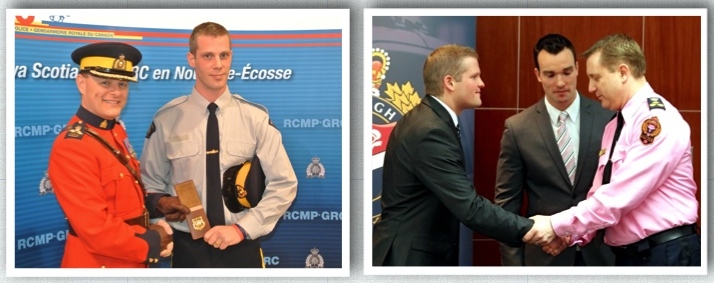A Bad Fire Year?
Photo (Web Source): A fire burns out of control in Northern Saskatchewan, north of Prince Albert. Across western Canada wild fires have consumed millions of acres of timber and killed an untold number of wildlife caught in the path. While only one death has been reported, that being a firefighter, Johnny Phare of Roberts Creek, on the Sunshine Coast, thousands of homes are threatened and many have already been destroyed and the danger level is extreme. Over 7000 people have been evacuated from several native communities in Northern Saskatchewan with an undisclosed number being relocated to my home town in Cold Lake, Alberta. (More photos in footer)
Introduction
On watching the local and national news tonight I listened as the Premiers of British Columbia and Saskatchewan commented on the challenge being faced by firefighters across their Province. Resources were being stretched to the limit and in some areas of Saskatchewan the military have been called in to assist. The Premier of Saskatchewan stated on Global National that he has placed a call to the Prime Minister, but did not elaborate on what he intended to ask the P.M. My goodness, the Province is burning, the military have been called in, 7000 people evacuated and the P.M. has not yet checked in with the Premier to see what national resources might be needed?
On the local news, a citizen from Port Alberni on Vancouver Island reported that earlier today a fire had started across Sprout Lake across from his home.  The fire was not threatening his property, but the man felt it needed immediate attention or would soon be out of control.
The fire was not threatening his property, but the man felt it needed immediate attention or would soon be out of control.
Photo (Nichele Studios, Port Alberni) This photo was taken by Paulette a day after the fire started. A giant Martian Mars water bomber sits idle under a smoke shrouded noonday sun on Sproat Lake just outside Port Alberni.
All but for the want of contract approval by the BC Government, that bomber would have been available it to tackle the Dog Mountain fire minutes from where it was moored shortly after the fire was called in. A contract was eventually signed and when the smoke cleared for a brief period under light winds, the bomber hit the fire with everything it had. However, by that time the fire had spread and done an incredible amount of damage to the pristine forests of Dog Moutain (more photos in footer). Update: Five days later that fire is still not fully extinguished.
(428)
Finding a Balance in Society
Richard Buckminster Fuller, an amazing man who published 30 books and during his lifetime he worked tirelessly at finding conditions that would lead to a balance in society. Check the section on ‘Depression and epiphany’ in the link.
Introduction
All I need do is start reading a comment such as that above or the cartoon and linked articles in the footer and I’m off on a new venture of trying to put my own thoughts in some kind of logical order. Because these posts often ‘evolve’ over time, this article will likely change as I do more reading and correct some of the logical errors. However, most of you who choose to read this will get a pretty good idea of where I stand ideologically. Why do I do it? Well, it’s fun and I like trying to make sense of the world around me. Perhaps Greece is melting down, but, then again, perhaps the challenges the Greeks face is just a symptom of the greater socioeconomic challenges that face mankind. Some friends on FB make reference to the bloody ‘socialists’ in Greece as being the problem, others blame the banks. I rather suspect they all contribute an equal share.
Finding a Balance in Society
The above meme was originally posted by the Occupy Wall Street group. It was then re-posted by a FB friend Ted Godwin, a generally quiet and non-controversial guy. His comment: “Now, somebody needs to point out to the 1% how land “ownership” is simply a paradigm for organization of physical space agreed to by society rather than an inviolable right.”
While the above comments do not wholly match the content below, they did prompt me to think more about the manner in which people are governed and how we seek to find a balance between competing societal social interests. As we approach an election (for that matter any election) people seem to sink to the lowest common denominator with their meme’s and comments. It seems that once we have set our minds on an ideological course, that ideology sticks like crazy glue. As for attack ads and posters, every political party does it, but some are much better at it than others. I suppose that is why we end up taking extreme positions on just about every issue. Distill it down to one sentence or one photo and that is our position. This demonstrates why we so often fracture on overarching issues.
(356)
Abducted: The First Twelve Hours
A full set of photos from this story and a short introduction for the post appears on the
McNeill Life Stories Facebook Page (Link Here) (Note: All the photos, except the two from the Oak Bay PD, were captured from Web sources.)
“Except for my dogs, I am alone in a world filled with people.”
For people of all ages, but particularly the young, few things can be more lonely than being on a street full of people and the only looks received vary between pity, disgust and outright anger. Most street people are viewed as being worth less than the clothes they wear. They could go missing, be raped or otherwise sexually assaulted, even murdered, yet this often raises barely a ripple of concern from the public, let alone police circles.
If they are of native descent or part of a visible minority, it is far worse. In 2010 during the Olympics, I watched as two members of the “Red Shirt Brigade” (Volunteer Security) in Vancouver were openly antagonistic and physically aggressive towards a native woman sleeping in the doorway of a store that was closed for the night. This story traces the social conflicts which remain close to the surface in this bountiful country of Canada. (Photo Web source)
(Post: February 2016 2794)
(July 2018 4702)
Introduction
“In the Oak Bay office, it was nearing 3:00 am, as the night shift Sergeant, Constable and a Civilian Dispatcher were cleaning up the coffee room when the phone lines lite up. In the quiet hours, this usually meant an accident or similar emergency had shaken several residents from their pre-dawn slumber. In this case, two blasts from a shotgun were followed by the blood-curdling screens of a woman. So began a twelve-hour saga where a young woman’s life hung in the balance.”
Having lived inside the police system for thirty years, this story, and others to follow, explore various Oak Bay Police Major Crime files from beginning to end. Many of the stories including this one, contain additional discussion about social issues related to the crime. This particular file is used as a sample of how some criminal acts (or suspected criminal acts) can be quickly filtered to ‘inactive’ when the victim lives outside the mainstream. While this is sometimes done for good reason, discounting these crimes can have serious, unintended consequences in the mainstream as is demonstrated in eight interconnected chapters beginning in the early 1980s and extending to the present day. If you wish to skip the social interest sections you can read Chapters 3-7 for the present criminal case.
Chapters 1: A discussion of how the police and justice system filter is applied and how societal norms (reference the section on deviance) impact the events such as those described in this Oak Bay Police abduction case.
Chapter 2: A general description of the Greater Victoria area, the various police departments and of the area in which the crime occurred.
Chapter 3 and 4: Provides background on the victim. This is done as a method of demonstrating how some victims, because of age, sex, socio-economic status, mental illness or some other factor, are left vulnerable when society in general and the criminal justice system in particular, fails to render assistance.
Chapters 5, 6 and 7: Tracks the investigation from beginning to end. This is done to demonstrate why a high level of cooperation between police agencies is an essential component of effective law enforcement. This is particularly so when a crime crosses jurisdictional boundaries, be it local, provincial or national. The chapters also demonstrate how a small Department the size of Oak Bay is able to provide a full range, effective police service. It also demonstrates how closely police agencies in Greater Victoria usually (but not always) cooperate with one another.
Chapter 8: Outlines other cases, in particular, the recent murder of Tim Bosma in Ancaster, Ontario, as a means of demonstrating how an application of the police filter can have unintended consequences when a serial sex offender or murderer is at work. I am presently writing a story about how a serial rapist and murderer (Scott Ian McKay) was finally charged with numerous counts of rape and one murder, after several police agencies in Greater Victoria came together in common purpose.
Addendum 1: A paedophile in our midst. This part, which began in the mid-1980s, flowed back to the surface in July 2013. It involved a Boy Scout Leader who led the Royal Oak Group of which our oldest son was a member until leaving the troop after a serious injury at a Scout Camp retreat in Sooke. There is no suggestion our son was molested, but the danger was lurking just one small step away from our family.
(6561)
Police Members and their Oath of Office
Not only did these photo ops take place on the opposite sides of Canada, the police recruits being sworn in will be entering two very different policing worlds. Their employment adventure begins with the Oath of Office they have just swore or affirmed and from that first step, their careers will diverge in a significant way that can be traced to that Oath. The photographs actually provide a rather good visual example of that difference.
Photo Left (Web Source) RCMP Associate Commander Brian Brennan, personally welcomed officer Peter Wallace into the ranks of the RCMP in Nova Scotia, presenting him with his badge during a special swearing-in ceremony.
Photo Right (Web source) Chief Frank Eisner, right, shakes hands with Casey Jones, left, and Matthew King during a ceremony to welcome the two new constables to the Victoria Police Department. (Photograph Adrian Lam, Times Colonist)
Background
As outlined in a related article, Dispensary Raids Galore!, those ‘discretionary’ raids and arrests at marihuana outlets in Nanaimo, Mission and Sechelt will waste an impressive amount of police and court time and will cost hundreds of thousands of dollars in cases where the RCMP will eventually walk away empty handed.
(1618)
‘Advocating Terror’ to become a Crime
Photo Collage: A few of Canada’s notorious terrorists: The Bacon Brothers (BC), Maurice Bouchard (PQ), Eric Dejaeger (Nunavat), Vito Rizzuto (r)(PQ), Alan Legere (NB), Clifford Olsen (died in prison)(BC), Paul Bernardo and Karla Homolka (Karla served 12 years after a plea deal) (ON), Willy Pickton (BC) and Russell Williams (ON).
Note: Just in case a few may think I am a left wing apologist for terrorists, you would be wrong. Terrorists, whether they be of the criminal type or of the religious type, are despicable scum who deserve to be removed from civil society wherever in the world they may seek to practice their murderous ways. What I do not think we should do is give them a platform on which to spread their vile messages, nor should we re-direct billions in scarce funds away from those things that could make a real difference in reducing crime in whatever form it may present itself.
Introduction
(610)
To Live or Die: Some Hard Decisions?
What if this man choose to die rather than live? Having choose the latter even in the face of a debilitating disease, he went on to became an extremely influential scholar. Every person who reaches such a crossroads in their life deserves the opportunity of reaching out to others before making the final decision to end life. Wrapping a potentially serious criminal charge around such discussions makes no sense and the Supreme Court of Canada got it right.
To Live or Die: Another choice along the path of life.
On the evening prior to the Supreme Court 9-0 decision overturning the Criminal Code sanction against ‘assisted suicide’, I attended the movie “A Theory of Everything”, a biographical account of the life of Dr. Stephen Hawkings. The movie was adapted from a novel written by Hawking’s first wife, Jane Wilde Hawking, the mother of their three children (family photo in footer). It was an excellent movie so if you have a chance drop in and enjoy.
As many know Dr. Hawking became a world-renowned mathematician and cosmologist who wrote a number of best sellers including A Brief History of Time which sold over ten million copies. Part of Hawking’s wide popularity was his ability to write about highly technical mathematical and scientific theories in terms a layman could understand.
(802)
Investigation of the Office of Police Complaints Commissioner
Photo (2015): Richard Rosenthal, Chief Civilian Director of the Office of the Police Complaints Commission.
Since being formed 30 months ago with a staff of 32 investigators and 18 civilians, 22 have either been fired or have resigned. During that period the Government has ordered at least three investigations into the operation and, as well, severance packages totalling $187,000 have been given to some who have departed. Where did it all go wrong?
UPDATE TO THIS ARTICLE: “Police watchdog Stan Lowe rides a ‘sea of change’ (Times Colonist, February 14, 2015): What a difference an inspired leader can make in an organization. Check out his article about Stan Lowe who has just completed six years as head of the B.C. Police Complaint Commission (BCPC) and has been appointed to another four year term. Following is one quote from the TC article:
“The OPCC works separately from the Independent Investigations Office, which was created in September 2012 to investigate police-involved deaths or serious injuries where the officer could face criminal charges. In cases where the Independent Investigations Office finds no criminal wrongdoing, the OPCC can still investigate for misconduct which could result in discipline, ranging from a written reprimand or training courses to more serious sanctions, such as a demotion or discharge.
The OPCC has a budget of just over $3 million and is staffed by 17 people, about half former police officers and half civilians. Lowe has said his staff has worked together “seamlessly.”
That short paragraph says it all and when you compare the operation of the BCPC to that of the OPCC (as outlined in the post below). There is a world of difference.
Harold
Background
Two long articles appeared in the Times Colonist this morning (February 8, 2015) about high turnover and reported administrative dysfunction within the police watchdogs office. While the turnover is extremely high, it was difficult to discern whether employee complaints were justified or whether there was just a ‘culture clash’ between the civilian leader Richard Rosenthal and ex-police officers and civilians hired to staff the organization.
It was not until near the end of the second article, Morale Went Down Fast (A4), written by Times Colonist reporter Katie DeRosa, I came upon this paragraph:
“Rosenthal kept a plaque in his IIO office that featured a mugshot of a police officer arrested during a corruption case that led to charges against 70 Los Angeles police officers in the Rampart division’s anti-gang section. Rosenthal was deputy district attorney in Los Angeles at the time and helped expose the corruption.” DeRosa continued: “Many former police officers with the IIO found that mugshot offensive.”
(490)
Biggest Boondogle in Victoria History
2007 (near Vancouver, B.C.) Premier Gordon Campbell discusses other major construction plans with one of the leading Olympic Contractors.
As the Capital Regional District edges ever closer to spending what will be something in the order of $1,200,000,000 to $2,000,000,000 (yes, that’s 1.2 – 2.0 billion – reference CRD Document on Costs, page 2, para 1) on sewage treatment, there was never a proper assessment of need, no consulting with scientists, no pressing environment issue, just one Premier who got his shorts in a knot when the Washington State Governor (a woman with a strict environmentalist background) told him flat out she would not support the 2010 Olympics unless he pushed for sewage treatment for Victoria (see link in footer).
(1409)








